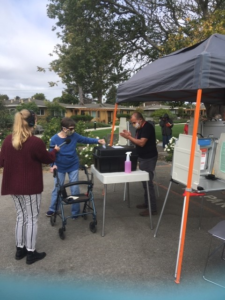
As Election Day draws near and in the midst of COVID-19, recent narrative has shifted to the best way to vote safely and how to ensure every ballot is counted. Voting in America is a privilege and a constitutional right that does not exist in many other parts of the world. Our freedom and the right to vote is at the core of our American democracy and should be protected.
This year, more than ever, attention has focused not only on contentious candidate debates and political rallies, but discussions around voter suppression, long-lines at the polls, securing the safety of ballots and keeping citizens safe while exercising their right to vote in a pandemic. Not surprisingly, many seniors are confused and frightened. They are faced with a plethora of choices about whether to vote by mail, drop off ballots or vote in person at polling locations. Many traditional voting centers, including some previously held for many years at our CCH communities, have moved. New polling locations and changed dates and times for early voting have adding to the confusion. Transportation can also present special obstacles and concerns for many seniors.
Here are some suggestions for ways to ease the burden on seniors and make voting easier and safer:
- Lay out the options to help seniors determine a preferred method by which to vote whether by mail, drop off ballot or at a traditional polling center (depending on your state’s voting provisions). Where possible, encourage seniors to vote early to avoid long lines and to reduce the risk of contracting COVID-19. Carefully weigh all the options, the benefits and make a plan for the best way for seniors to vote safely.
- Review voting materials in advance. Most municipalities provide details on where and how to vote and information on local and state ballot measures. Review this information carefully with seniors so they understand what’s on the ballot and can make informed decisions.
- Determine transportation arrangements, if needed, and how and when this will occur. If a ride is needed to cast a vote, determine in advance the correct voting location, whether it’s possible to vote earlier than Election Day and who will drive the senior to the poll. If the senior has received the ballot in advance, help determine if it is possible for the senior to complete the ballot and authorize a trusted person to drop it off. Be sure to make these arrangements ahead of time so there is no confusion.
While voting can present special challenges for seniors, advance planning can lower the level of anxiety and enable seniors to feel good about performing their civic duty, bringing them a sense of satisfaction and accomplishment. For more information about how to develop a voting plan, review the voting guide published by LeadingAge.



